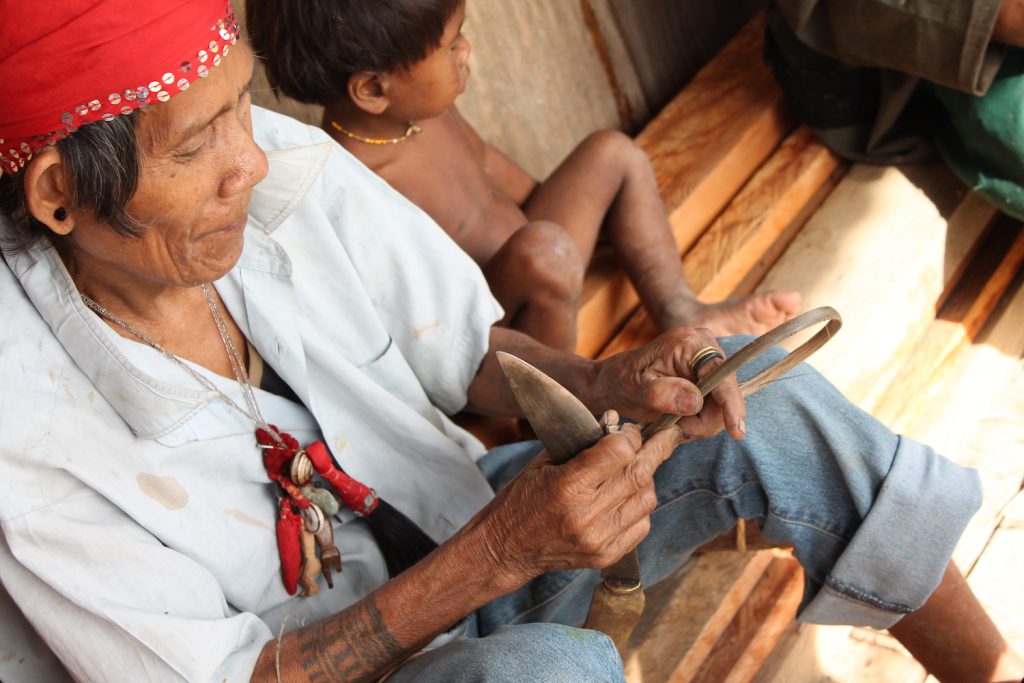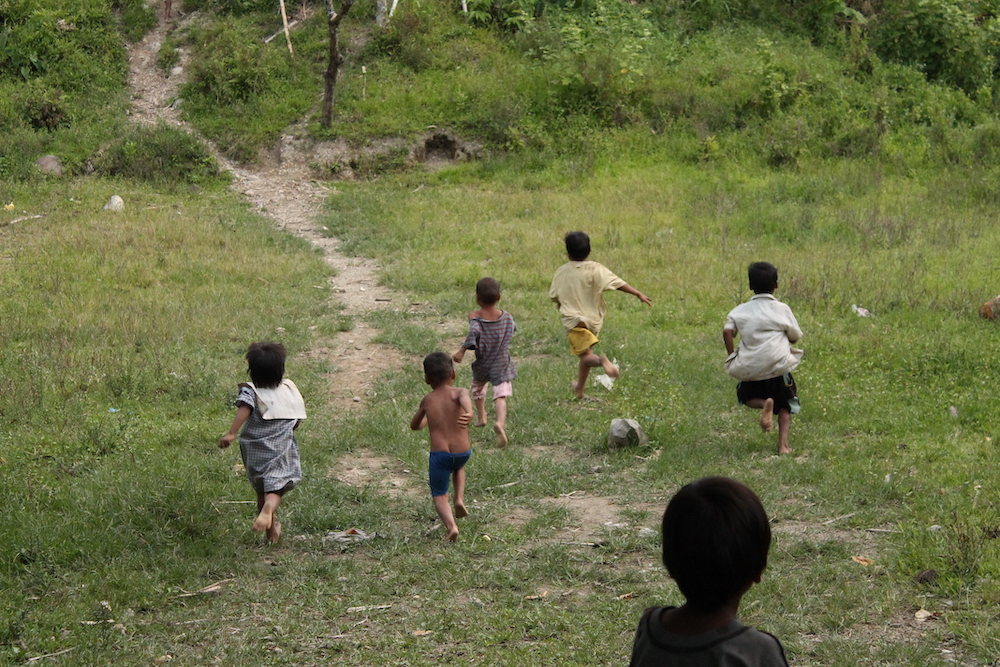What Netflix Got Wrong About Indigenous Storytelling

Within days of its release last June, the Netflix animated series Trese—based upon the award-winning Filipino comic book series of the same name—landed on the top 10 lists of most streamed television shows in 19 countries.
Eagerly awaited by those in the Philippines and the diaspora, the platform’s first original animated show from the Philippines places Filipino folklore center stage by reimagining what it would be like if supernatural creatures dwelt among humans in the decaying alleyways and ritzy skyscrapers of modern-day Manila. Trese follows paranormal detective Alexandra Trese as she solves cases involving these entities, while maintaining the balance between the spiritual and earthly worlds.
As Filipino anthropologists—and cartoon lovers—we’re always curious about how traditional culture and folklore are popularized and represented in various media. Trese features an array of beings familiar to Filipinos both young and old, like duwende (diminutive, earth-dwelling creatures) or aswang (shape-shifting creatures with a taste for human organs). But the ultimate antagonist of the series is Talagbusao, a figure presented in the show as a bloodthirsty, male “god of war” whose nature is to wreak havoc and thrive in it.
Unlike the duwende or the aswang, the Talagbusao is not as well-known to most Filipinos or as well-researched by academics. Fay-Cooper Cole, a U.S. anthropologist who worked in the Philippines in the early 1900s, provided one of the first written descriptions of the Talagbusao (or as he spelled it, Talabosau). He wrote that among the tribal communities of the southern island of Mindanao, the Talagbusao was the “patron of the warriors and of people who run amuck.” It is this characterization that ultimately found its way into Trese.
But as we dug further into it, we realized that the Talagbusao depicted in Trese barely resembled what Indigenous communities in Mindanao mean when they talk about this entity or its related forms, called busaw. This disconnect, we found, reveals something important about the tropes that popular narratives like Trese tend to rely on.
As a “universal” good-versus-evil tale, Trese needs a supervillain. But if we’ve learned anything from our Indigenous friends, it’s that many of the “universals” non-Indigenous people take for granted may not be that universal after all.
Around the time we were binge-watching Trese, we had a conversation with our friend Pialan (a pseudonym), an Indigenous Pantaron Manobo man from southern Mindanao. He wore a bundle of pendants around his neck. When we asked him how to describe them, he told us, “It’s gahum,” meaning “power” in the Bisaya language.
“How would you call gahum in your Manobo language?” we asked.
“We call it busaw,” he replied.
This answer surprised us. We knew that in early colonial documentation of Indigenous life, “busaw” was said to name a generic type of malignant spirit that did bad things to people. (Adding the prefix “Tala” turns it into the proper name of a god—Talagbusao—which literally means “of the busaw.”) So, why would Pialan, a committed, yet mild-mannered young leader, associate his valued necklace with bad creatures and a malevolent war god?
The answer rests in better understanding the ways of life practiced by Pialan and other members of his community. We’ve been working with Pantaron Manobo communities in the southern Philippines for more than a decade. They currently face various threats to their ancestral lands and rights to self-determination, including pressures of internal displacement, sustained military operations in their mountain domain against insurgents, and unwelcome development projects.
Working with them has taught us that such urgent issues are as much about politics as their everyday philosophies and daily dealings with elements of their cosmology. Unlike in many other parts of the country, their communities historically didn’t deal intensively with missionaries, so most don’t identify with Christianity or with Islam, the two major religions in the Philippines. Instead, their understandings of supernatural or of unseen forces permeating the world fit what most anthropologists label as “animism.”
Their current insights on the supernatural can thus cast new light on the early records created by Western, colonial-era researchers (like Cole) and missionaries. These accounts of the lifeways of various but related Indigenous groups of Mindanao (such as the Agusan Manobo, the Bagobo, and the Bukidnon, who now call themselves Higaonon) often reflected biases and prejudices that outsiders held. For Jesuit missionaries in the late 1800s, for instance, the “busao” conveniently took the place of “the devil.” Another U.S. colonial-era anthropologist, Laura Benedict, noted that these were “demons” that “haunt graveyards, forests, and rocks.”
This association with busaw as evil beings persists today: In areas disrupted by militarization, Manobo youth euphemistically refer to soldiers as busaw. This coded language for aggressive wrongdoers has caught on among urban-based support groups, who have mainstreamed the term to mean agents of development, perhaps unwittingly continuing what missionaries and colonial anthropologists started.
But in listening intently to how “busaw” is used by the people we work with, a more complicated picture emerges.
One eye-opening moment came years ago, before mobile phones became ubiquitous in Manobo communities. Upon seeing our digital camera, an elder exclaimed in a serious tone, “That is a busaw-object!” This same elder was a baylan (shaman) who, because of his respected reputation, was described by others as being “dakel busaw,” or having “big busaw.”
Another friend, a well-known chanter of Manobo olaging (epics), told us that busaw guided him during performances.
While reflecting on her departed relatives, an older female leader told us that the dead became “busaw to tanu” (busaw of the land).
Fans of Trese have created their own renditions of the Talagbusao character, including cosplay versions as seen in this post from a special effects artist. The first line of the caption in Filipino translates as “Blood, War, Arise Talagbusao!”
None of these instances fit with the idea of busaw as the “devil” or the supreme evildoer Talagbusao in Trese.
Given these different facets of busaw, it may be better to return to our friend Pialan’s statement. Is busaw, instead of being “the devil,” more akin to “power” or “potency”?
As anthropologists have documented in various Southeast Asian societies, “potency” describes a kind of energy or agency that suffuses this world and the next, and is shared by humans, nonhumans, and landscapes. Could the negative overtones of busaw stem more from the unease anyone can expectedly feel in the face of such an intense force—and less from any innate moral quality?
In Manobo olaging (and indeed in other Philippine epics), unlike in Trese, characters do not neatly fall as “good guys” or “bad guys.” Epic heroes and heroines travel, have adventures, and fight battles, but they are not evaluated according to such moralistic standards.
Once, during fieldwork, I (co-author Myfel) was with Pialan when we spotted a group of kids mimicking scenes from an epic cycle they all heard chanted just the night before. One child, playing the hero Man-oloron, was chasing down his playmate who had taken the role of a vanquished Young Man from Umayyam. In this epic cycle, the Young Man of Umayyam’s marriage proposal to Man-oloron’s sister had been rebuffed, prompting him to plan an attack to redeem his honor, and Man-oloron to prepare to defend his community.
“Won’t the other kid feel bad that he has to play the defeated character?” I asked Pialan, who also happens to be the cousin of the epic chanter.
“Not at all,” he answered. “The chanter can change the story later on, and maybe in that version Man-oloron will lose and the other guy will win.”
In other words, “hero” and “villain” aren’t salient, stable categories in Manobo storytelling; instead, what matters is how a person demonstrates their abilities and resolve. And like in real life, circumstances are always changing, and outcomes remain uncertain.
This doesn’t mean that the Manobo have no concept of right and wrong. Far from it. They do draw sharp lines elsewhere, such as in husay, their rigorous process of conflict resolution. But other instances in life don’t always need to play out in such a black-and-white mode. In some moments, a person just needs to express caution and trepidation in the face of an intense, complex, yet unfamiliar thing. In doing so, one marks this thing as the limit of one’s knowledge and the start of one’s curiosity.
This mode of storytelling seems to be more preoccupied with urging the hearer to ready themselves if and when they encounter an unknown force or new situation—but these stories stop short of telling you what to do, or identifying which side you should be on.
It may well be that the intention of Trese’s creators is simply to tell an enjoyable detective story, with a Filipino folkloric flair.
But we see it as an opportunity to reflect on how popular media often appropriates Indigenous knowledge without fully understanding the traditions and places that gave birth to it. We would urge content creators to move away from just viewing Indigenous stories as pools from which characters are fished out to serve already recognizable narrative tropes or metaphors: the Talagbusao as the consummate villain, for instance.
What would it take to move beyond merely fitting these folkloric elements into already familiar frameworks?
It would mean imagining new ones—while also adhering closely to the distinct historical trajectories and experiences of the communities that produced these stories in the first place. Staying grounded in and respectful of those anthropological realities may generate unexpected understandings of the world and how it works—and offer new kinds of stories that move beyond good versus evil.
From there, within those constraints, artists, writers, and viewers can let their re-imaginations take flight.


































